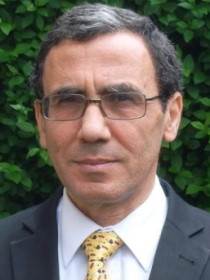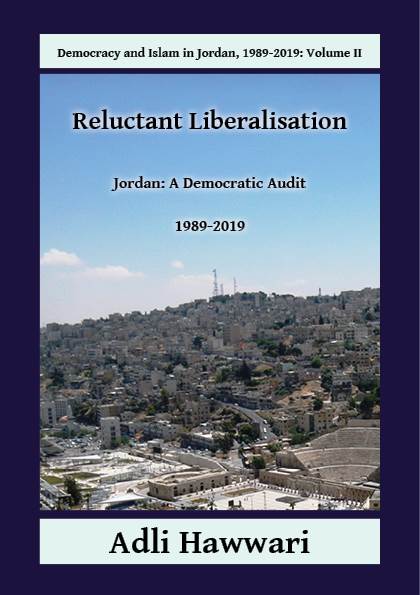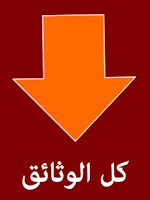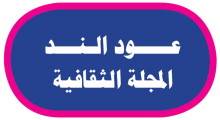Jordan: A Democratic Audit
Civil Society and Popular Participation
Dr. Adli Hawwari
 In this chapter, I continue the presentation and discussion of the data of the democratic audit. This chapter deals with the third major category: civil society and popular participation. It asks questions in three areas: the media in a democratic society; political participation; and decentralization. As in the previous chapter, the overarching question is stated; the marks are given; and the results are discussed.
In this chapter, I continue the presentation and discussion of the data of the democratic audit. This chapter deals with the third major category: civil society and popular participation. It asks questions in three areas: the media in a democratic society; political participation; and decentralization. As in the previous chapter, the overarching question is stated; the marks are given; and the results are discussed.
3.1: The Media
The overarching question (Q11S, Q72L) asks: ‘Do the media operate in a way that sustains democratic values?’ The highest mark given is 10; the lowest is 0. The mean is 5.1, which is close to the most frequent mark.
The marks reflect a relatively high level of dissatisfaction with the media. It is necessary to take a closer look at the media scene in Jordan in order to identify the possible reasons.
Newspapers and magazines are the oldest type of media in Jordan. Jordanian radio broadcasting dates back to 1948. Its news bulletins used to be dominated by the news according to hierarchy of positions, starting with the king, prime minister and then the ministers. The news would be about who visited what; who opened which project and other news items that professional editors would not usually consider newsworthy. News programmes improved in recent years, by changing formats and broadcasting reports by correspondents, but the official line remains dominant.
Jordan had its first TV channel in 1966. Its main news bulletin is at 8 pm. It used to be dominated by official news. Changes, however, have been introduced, such as news headlines or short bulletins on the hour. The main bulletin is still in the same time slot. Although TV started to have political discussion programmes, the participants in many cases are former officials. A discussion of an external issue, such as the Palestine question, will pay its dues to the wisdom of the king.
Both broadcasting services, radio and TV, are state-owned. An attempt to make Jordan attractive to media organizations had limited success. A media village did not prosper as did its counterpart in Dubai which became a magnet for various Arab media outlets. However, the media scene has changed to some extent. In 2002, the government created the Audio-Visual Commission (AVC) and empowered it with licensing private radio and TV stations, subject to the approval of the government.
There are now private local FM stations, specializing in music and phone-in contests. The army and police also have their own FM radios. Obtaining a licence to establish an entertainment station is much easier than one that wishes to broadcast news, as can be seen in the conditions stipulated by the AVC.
Jordan has a national news agency which is referred to as Petra, instead of Arabic or Latin acronyms. The agency supplies local papers with official news, which the daily papers publish as it is. For many years, there were two dailies in Jordan; Al-Rai and Ad-Dustour. This was the result of a move by the government to merge several dailies which used to be published in the West and East Bank.
After the elections of 1989, many weekly newspapers appeared on the scene. However, after the peace treaty with Israel in 1994, the government of Abd al-Salam al-Majali changed the press law to increase the capital required to continue to publish. Many of the weeklies failed to meet the requirement and shut down. One of the weeklies which managed to survive was al-Majd, but was subjected to censorship or legal action on several occasions. The Islamic weekly, Assabeel, received permission in 2008 to publish daily and it did so in February 2009.
The advent of the Internet offered opportunities to provide news without having to own presses or employ many people. There are now several websites which provide news. The new media outperform the traditional media in being faster with their news, and posting pictures that the dailies do not, because they still avoid the risk of antagonizing the government. The effect of the new media on newspapers is a change in attitude which has led the papers to rely on their websites, after resisting the Internet and arguing that it affects sales. The daily papers now update their websites but not in the same degree as the exclusively online news sites. In 2010, the government of Samir al- Refai wanted to control what the online news sites could publish. The owners opposed al-Refai’s attempt and succeeded in forcing him to abandon it. Credit was given to the personal intervention of the king.
Having followed Jordanian news websites during the course of the research, I noted that they still lavishly praise the king and the Hashimites. They republish items from Jordanian, Arab, and international papers. It is often clear where the item was originally published. Occasionally, the original source is not acknowledged.
Those who are in new media are not in it solely to contribute to democracy. The Internet and the development of digital technology made it possible to enter the media field with minimal capital in order to make money from advertisement and sponsorship. During the campaign for elections of 2010, news sites were full of pictures of candidates. Moreover, the multitude of media outlets does not necessarily mean a variety of opinions. Without freedoms enshrined in the constitution and practised without fear, the media will seek to have a niche that guarantees a certain income, and will become more restrained in their coverage.
Although the media contribute to democracy, they can also play a counter-productive role. In the case of Rwanda, for example, the media went as far as inciting genocide. In Jordan, some new media outlets contribute to the alienation of citizens of Palestinian origin, by publishing provocative articles and comments by the readers. Moreover, for the media to contribute to democracy, various issues have to be taken into consideration, including ownership and independence. This is not an irrelevant debate in the case of Jordan.
In the long questionnaire, three of the six assessors answered the question. The marks are 2, 3, and 6. The mean is 3.7, which is lower than the mean in the short questionnaire. The refrain from giving marks is likely to be a reflection of dissatisfaction. The mark of 6 given by one of the assessors is probably a reflection of the fact that the media scene has changed in Jordan considerably. However, overall there is a long way to go before one can say the media ‘sustain democratic values’ in Jordan. This applies equally to new media.
3.2: Participation in Public Life
The overarching question (Q12S, Q77L) asks: ‘Is there full citizen participation in public life?’ I anticipated that this question would be vague without clues concerning what was meant by full participation. The long questionnaire has the clues, so I added an explanation under the question in the short questionnaire. The ‘full participation’ was referring to the diversity of civil society groups; the participation of women and their ability to hold office; and ability of people from all social groups to hold public office.
Democratic theorists emphasize various aspects of democracy to make it work in a satisfactory manner. For instance, Shapiro (2003) and Benhabib (1996) emphasize the need for deliberation; thus, there is a ‘deliberative democracy’ approach. Another emphasis is on ‘participation’. Macpherson (1977, p. 94) argues that ‘low participation and social equality are so bound with each other that a more equitable and humane society requires a more participatory political system’.
Hourani (2010, pp. 5-8) points out that there has been a considerable improvement in the ability of CSOs to operate in Jordan. After 1989, many new societies have been formed, such as human rights organizations and research centres. He further notes that when Jordan implemented a privatization programme in the 1990s, which entailed removing subsidies, CSOs stepped in to help alleviate poverty. The CSOs also contributed to women empowerment, community development, and youth training. The data cited by Hourani show that there are 3,200 CSOs, with more than a million members.
Although Hourani’s figures suggest the existence of diversity and a high level of involvement, the law regulating CSOs prevents charitable organizations from engaging in political activities. As Jamal (2007) points out, CSOs in Jordan are ‘divided according to political access, clientalism, the availability of funding and relationship with the regime’ (p. 115). Her observation is correct. One notable aspect of political access is the attendance of activities by ministers or members of the royal family. The availability of funding is best seen in CSOs which belong to European and American organizations, or have collaborative agreements with them. The connection also provides a level of protection for these CSOs when they do not agree on some issue with the government
Moreover, for a CSO to prosper there is usually an attempt to seek some royal patronage. For instance, a women’s society would seek support from Princess Basma. To illustrate this point, two organizations can be mentioned. The first is the Jordanian Women Union, and the Arab Women Media Centre. Both have Princess Basma as their honorary president.
Jamal (2007) correctly notes that despite the increase in CSOs, due to ‘a system of rewards and sanctions founded on support for the government,’ the CSOs end up being ‘supportive of the palace, or […] marginalized in their civic spheres’ (p. 119). Therefore, the appearance of diversity is not a reliable indicator of lively political participation. Other issues, such as the laws regulating the sector of CSOs, should be examined.
With regard to the participation of women and their ability to hold office, the points to recall are that women rose to high ranks through the nonelected path. In competitive elections, women failed to win outright, except in a few cases. The first was in 1993, where competition was limited to members of the Circassian community in Jordan. Toujan Faysal won. The second was Falak Jamani. She was a doctor with the rank of general (liwa’) in the army’s medical corps. She won in the governorate of Madaba in 2007.
The third woman was Reem Badran who ran in one of Amman’s constituencies in 2010. The failure to win in outright competition led to reserving six seats to women in 2003. The number was increased to twelve in 2010. Through this route, women entered the HoD according to a formula based on a percentage of the votes in the governorates not on the absolute number of votes won.
In relation to the ability of people from different social sectors to hold office, I will focus on the positions of prime minister and minister. Given the fact that governments are appointed, rather than elected, the trend in forming the government is to try and satisfy different regions of the country, the tribes, and the palace. If a minister is selected from the northern part of the country, another from the southern region is chosen.
In 2007, Adnan Badran tried to form a government without these considerations. His government lasted several months only. Members of some families often hold ministerial posts; for example, the Touqans, Majalis, and Refais.
Political participation in the senses outlined above is limited. I will now examine participation in a more procedural sense, namely, regarding the number of registered voters and the voter turnout.
The elections of 1989 were held without an officially-recognized presence of parties. According to data available from IDEA, the number of registered voters was 1,020,444. The number of those who cast their votes was 541,426 (53.06%). In 1993, the elections took place after the enactment of the political parties law, but under a new elections law which prevented multiple votes in a multi-seat constituency. The number of registered voters was 1,501,279. The number of those who cast their votes was 822,294 (54.77%).
In 1997, IAF/MB and other parties boycotted the elections. The number of registered voters was 1,489,000. The number of those who cast their votes was 702,260 (47.45%). In 2003, all parties took part. The number of registered voters was 2,325,496. The number of those who cast their votes was 1,342,999 (57.75%). The elections of 2007 were preceded by disputes between the government of Maruf al-Bakhit and the MB/IAF. A boycott by IAF/MB was a strong possibility. However, IAF/MB did not boycott, and won six seats. The number of registered voters was 2,455,686. The number of those who cast their votes was 1,326,070 (54%).
The elections of 2007 were characterized by the use of money. The term ‘political money’ surfaced in Jordan after it was used in Lebanon in reference to al-Hariri phenomenon, which bought Rafiq al-Hariri and his son, Saad, political leadership through the use of money, whether in the form of hand-outs to the poor, employment in Hariri-owned foundations, or in projects implemented by Hariri’s company, Solidaire.
In 2010, the government of Samir al-Refai toughened the severity of the penalty for the use of money for political purposes, but there were ways to use money indirectly. There were many claims of illegal use of money in this round of elections, but the government said it dealt with all the cases that were reported.
The elections of 2010 were boycotted by MB/IAF. The impact of the boycott was most visible in the low voter turnout in Amman, which was under 40%. However, the government aggregated the percentages across the country. This produced an average of 53%, which the government considered satisfactory. This percentage is based on 2,370,000 votes cast.
The manipulation of the electoral process leads electors to lose interest. Candidates try to stimulate participation through appeal to tribal connections. Others use money to acquire votes by giving a certain sum for a vote, or by facilitating transport to and from polling stations. Legally, the use of money is not allowed. However, candidates offer incentives in a variety of ways. For example, they offer food, or pay the expenses of travelling to Saudi Arabia to perform religious rituals. These practices are of limited success because, in the absence of change in the political atmosphere and the decision-making processes, people refrain from registering and voting.
In the long questionnaire, all six assessors answered the question. The marks given are 0, 2, 3, 3, 5, and 7. The mean is 3.3. Given that the assessors had the benefit of looking at more questions in this subcategory, and not only at the overarching question, I would suggest that their assessment reinforces the scepticism about political participation. The high mark of 7 by an assessor is most likely due to the active involvement in the field of CSOs. However, the positive view is not shared by the rest of the assessors.
3.3: Decentralization
The overarching question (Q13S, Q81L) asks: ‘Are the decisions taken at governmental level the most appropriate for the people affected?’ All twenty-four respondents answered the question. The highest mark is 10; the lowest is 2. The mean is 5.1, which is close to the most frequent mark.
The question takes it for granted the decentralization is good, irrespective of the size of a given country. The underlying assumption is flawed. For instance, decisions to provide services will depend on budgets. When funds are tight, councils reduce or cease to provide services. One example to illustrate the point in the UK is the collection of rubbish, which used to happen every week. However, councils changed that to once every two weeks, which caused some fears concerning the impact on sanitation. Moreover, the quality of services provided by local authorities may not be as good as when they are provided centrally. As regards Jordan, there are municipal councils, but they may not be able to take the decisions that affect their areas. The councils are at times appointed; at other times they are elected. Therefore, there is no consistency in this regard.
This question also assumes that decentralization is universally welcome. There are good arguments for decentralization, but a plan to decentralize government was vehemently rejected in Jordan. It was introduced in 2009 by the Prime Minister, Nader al-Dhahabi. The plan divided the country into three regions: northern, central, and southern. However, it faced opposition from all sides, including the MB/IAF, because it was considered part of a bigger plan to resolve the Palestinian question. After the strength of opposition was appreciated, King Abdullah II signalled in May 2009 that the plan would be implemented at the governorate level instead.
In the long questionnaire, all six assessors answered the question. The marks given are 1, 2, 2, 4, 5, and 6. The mean is 3.3, which is substantially lower than the mean in the short questionnaire. The two groups agree that the decisions are not taken at the appropriate level. The tendency in Jordan is for central authorities to make decisions, but to expect implementation to take place locally. Also, the government intervened in the work of local councils through appointments. In 2001, the government forced councils to merge. In 2011, the government of Maruf al-Bakhit implemented a selective demerger which caused protests in some municipalities to demand separation. The Prime Minister, Awn al-Khasawneh, who succeeded al-Bakhit, calmed the situation by setting a deadline for applications to demerge.
Adli Hawwari (2020). Reluctant Liberalisation: A Democratic Audit of Jordan, 1989-2019. London: Ud Al -Nad Ltd.

- Jordan: A Democratic Audit
 https://orcid.org/0000-0003-4420-3590
https://orcid.org/0000-0003-4420-3590




